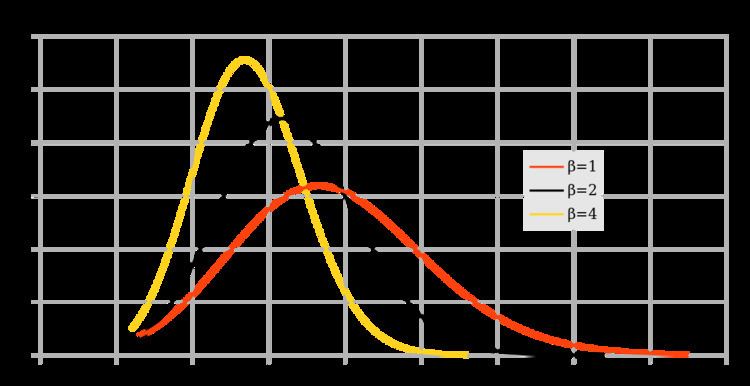 | ||
The Tracy–Widom distribution, introduced by Craig Tracy and Harold Widom (1993, 1994), is the probability distribution of the normalized largest eigenvalue of a random Hermitian matrix.
Contents
- Definition
- Equivalent formulations
- Other TracyWidom distributions
- Numerical approximations
- Additional reading
- References
In practical terms, Tracy–Widom is the crossover function between the two phases of weakly versus strongly coupled components in a system. It also appears in the distribution of the length of the longest increasing subsequence of random permutations (Baik, Deift & Johansson 1999), in current fluctuations of the asymmetric simple exclusion process (ASEP) with step initial condition (Johansson 2000, Tracy & Widom 2009), and in simplified mathematical models of the behavior of the longest common subsequence problem on random inputs (Majumdar & Nechaev 2005). See (Takeuchi & Sano 2010, Takeuchi et al. 2011) for experimental testing (and verifying) that the interface fluctuations of a growing droplet (or substrate) are described by the TW distribution
The distribution F1 is of particular interest in multivariate statistics (Johnstone 2007, 2008, 2009). For a discussion of the universality of Fβ, β = 1, 2, and 4, see Deift (2007). For an application of F1 to inferring population structure from genetic data see Patterson, Price & Reich (2006).
Definition
The Tracy–Widom distribution is defined as the limit:
The shift by
Equivalent formulations
The cumulative distribution function of the Tracy–Widom distribution can be given as the Fredholm determinant
of the operator As on square integrable functions on the half line (s, ∞) with kernel given in terms of Airy functions Ai by
It can also be given as an integral
in terms of a solution of a Painlevé equation of type II
where q, called the Hastings–McLeod solution, satisfies the boundary condition
Other Tracy–Widom distributions
The distribution F2 is associated to unitary ensembles in random matrix theory. There are analogous Tracy–Widom distributions F1 and F4 for orthogonal (β = 1) and symplectic ensembles (β = 4) that are also expressible in terms of the same Painlevé transcendent q (Tracy & Widom 1996):
and
For an extension of the definition of the Tracy–Widom distributions Fβ to all β > 0 see Ramírez, Rider & Virág (2006).
Numerical approximations
Numerical techniques for obtaining numerical solutions to the Painlevé equations of the types II and V, and numerically evaluating eigenvalue distributions of random matrices in the beta-ensembles were first presented by Edelman & Persson (2005) using MATLAB. These approximation techniques were further analytically justified in Bejan (2005) and used to provide numerical evaluation of Painlevé II and Tracy–Widom distributions (for β = 1, 2, and 4) in S-PLUS. These distributions have been tabulated in Bejan (2005) to four significant digits for values of the argument in increments of 0.01; a statistical table for p-values was also given in this work. Bornemann (2010) gave accurate and fast algorithms for the numerical evaluation of Fβ and the density functions fβ(s) = dFβ/ds for β = 1, 2, and 4. These algorithms can be used to compute numerically the mean, variance, skewness and excess kurtosis of the distributions Fβ.
Functions for working with the Tracy–Widom laws are also presented in the R package 'RMTstat' by Johnstone et al. (2009) and MATLAB package 'RMLab' by Dieng (2006).
For a simple approximation based on a shifted gamma distribution see Chiani (2014).
